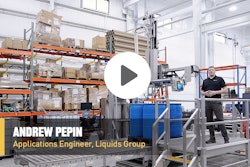
As the face of healthcare in the U.S. changes under the Patient Protection and Affordable Care Act (ACA), in vitro diagnostic (IVD) device manufacturers will likely find themselves faced with an increase demand for diagnostic, monitoring, and screening devices. This need, coupled with the pressure healthcare professionals will face to deliver efficient results, will push device manufacturers toward the development of highly innovative solutions.
As the ACA extends coverage to millions of additional people, an increased demand for diagnostic testing is likely to ensue. Additionally, people with coverage who might have put off seeing a healthcare provider annually because of costs will be able to access free preventative care, which will also expand the market for in vitro diagnostic tests.
With the increased number of people seeking medical care, to reduce costs, the Act is moving healthcare providers toward outcome-based care when a patient is covered under certain federal entitlement healthcare programs. Providers will be reimbursed based on patient outcome and will presumably eliminate unnecessary treatments and provide better care for patients.
The drive for outcome-based medicine can have a positive impact on some diagnostic manufacturers. For example, there will be an increase in genetic testing to confirm a diagnosis and demonstrate improved outcome, rather than taking the traditional, time-consuming trial-and-error approach. The outcome-based care will be a catalyst for innovation as R&D departments strive to create the most efficient, accurate IVD devices. Developing successful state-of-the-art diagnostics that will assist in reducing unnecessary treatments are critical to support profits, particularly in light of the 2.5% excise tax on medical devices that the Act also mandates.
However, as IVD manufacturers seek a return to innovation, they must rely not only on internally developed technology but also complementary technology from critical vendors. For development to be effective, it should utilize a Quality by Design (QbD) holistic approach considering the full spectrum from design through distribution and use. Collaboration with key suppliers will be a paramount step toward success.
One such crucial vendor is the sorbent supplier (desiccants, oxygen absorbers, etc.) to manufacturers of moisture- and oxygen- sensitive devices. Moisture, oxygen, and, in some cases volatiles, can introduce particular challenges to the device’s stability. Certain IVD devices can be extremely sensitive to these elements, therefore, environmental management of the packaging headspace will play a major role in ensuring that the device reagents and chemistries remain stable. Because of the negative impact these external environmental elements can cause, taking a QbD approach and consulting with your sorbent vendor early in the development process allows your R&D team, packaging engineers, and packaging operations groups to work together to ensure the desired stability outcome for your device.
Moisture is the most deleterious environmental factor to which IVD devices might be exposed, making humidity control during transport and storage critical to maintaining stability and related functionality. To this end, each device is typically packaged in a sealed impermeable pouch along with a desiccant to ensure this protection.
The additional protection from a desiccant is necessary, even with an impermeable pouch, because extraneous moisture from the environment during packaging operations, from components of the device, or from materials packaged with the device can contribute to accelerated degradation, leading to erratic reliability and failure. Additionally, pouch stock defects and less than perfect seals in the pouch will permit moisture ingress as well. If a device utilizes a hygroscopic chemistry or membrane, for example, even a small amount of moisture in the packaging can cause the device to be ineffective.
However, not all IVD devices require a low relative humidity and in many cases humidity management is required. Over desiccation can in some cases impair the device stability. Take for instance one particular device that under excess desiccation has the normally hydrophilic material become hydrophobic. In another example, enzyme-based diagnostic materials, both dry and hydrated, also require careful moisture management. Proteins can become denatured without sufficient residual moisture or the evaporation/condensation cycle caused by temperature fluctuations during shipping and storage can interfere with device stability if tight moisture management isn’t maintained. Maintaining the Equilibrium Relative Humidity (ERH) within the packaging headspace will allow the water activity level of the regents to remain consistent and, as a result, ensure their efficacy at time of use.
Similarly to moisture, but to a lesser extent, oxygen and volatiles can also lead to the degradation of IVD devices, severely limiting their usefulness. During long-term storage, for example, volatile organic solvents maybe be released from the adhesive used in manufacture of a lateral flow IVD device and may adsorb to the nitrocellulose membrane, adversely influencing the membrane’s wetting properties and lateral flow properties.
Where moisture reduction is required, a properly sized traditional desiccant can effectively lower the relative humidity (RH) within the packaging and provide the required stability. The same is true for simple oxygen absorption and volatile management—properly sized traditional oxygen absorbers or volatile adsorbers will suffice. However, for cases like the above where moisture management is necessitated or a combination of moisture, oxygen, and/ or volatile management is needed, an intelligent sorbent must be considered.
Using pseudo-empirical modeling
Whether a traditional or intelligent sorbent is needed, proper sizing is critical to ensuring its potency is sufficient to last until the device’s intended end of life. The proper desiccant formulation and amount required to maintain a specific stability profile for the device over the required shelf life can be accurately predicted using pseudo-empirical modeling, providing the most promising sorbent stability solution for the device.
Multisorb Technologies is using pseudo-empirical modeling via its Calculations through Operations® program, which utilizes its proprietary SimulSorb™ and SimulOx™ modeling programs. Pseudo-empirical modeling is widely accepted within the pharmaceutical industry and is garnering increased use and acceptance in the IVD market. Pseudo-empirical modeling can save considerable development time over typical sorbent ranging studies. The Multisorb modeling simulations can predict the RH of the packaging system, which includes the desiccant, under real time test conditions (2 years, typically at 25°C and 60% RH).
Based on a given set of external conditions and selected input criteria, such as the internal and external ERH conditions with time and the adsorption isotherms of the sorbent and device components or chemistry, the modeling can predict the moisture/oxygen conditions of an IVD product and its packaging headspace. The precision and accuracy of this process allows a tailor-made sorbent to be formulated. It must be noted that the modeling cannot truly replace empirical testing; however, the use of pseudo-empirical modeling decreases excessive testing.
Although impermeable packaging goes a long way to protect the stability of IVD devices, true stability can only be achieved through the management of moisture, oxygen, and volatiles within the packaging headspace from the time of manufacture, during shipping and storage, and throughout the entire life of the product. Optimized traditional and intelligent sorbents, formulated with the assistance of pseudo-empirical modeling, play a critical role in maintaining the device’s integrity throughout its shelf life. IVD device manufacturers who have turned to modeling have found it to be the most efficient manner for sorbent selection.
As the healthcare system evolves and the demand for innovative, fast, and accurate devices becomes more acute, it will become imperative that manufacturers take a holistic approach by considering the device stability needs from its development through its end use and work closely in partnership with their vendors to find optimized solutions.
—Article supplied by Multisorb Technologies’ Adrian Possumato, Vice President, Healthcare Packaging, and Lisa Benson, technical writer. Possumato works closely with drug innovators and generic pharmaceutical manufacturers in their R&D, quality, regulatory, engineering, and manufacturing departments to determine the best selection of packaged sorbents to stabilize pharmaceutical formulations. He has more than 20 years of experience in the pharmaceutical and chemical industries. Benson has experience writing technical communications for corporations and government agencies and has been published in both domestic and global publications.


























